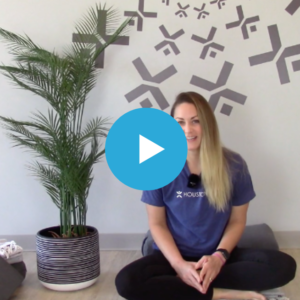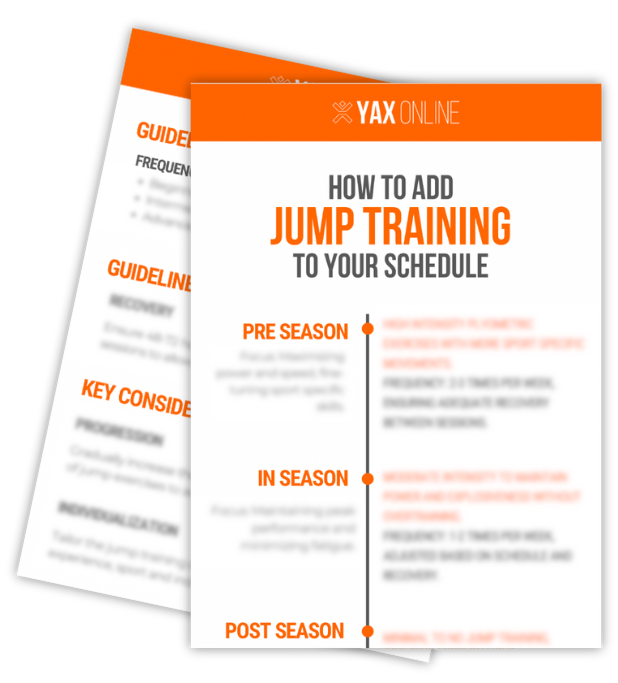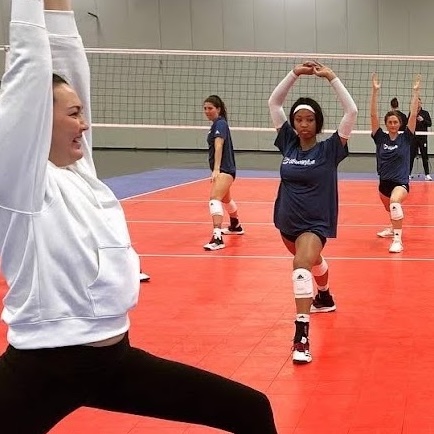Coaches are often heard telling athletes, “just concentrate out there,” or “keep your head in the game,” and although everybody has suffered from a lapse in concentration at one time or another, it may not be completely clear what concentration even means. A useful definition of concentration in sport and exercise settings from the scientific literature typically contains four practical aspects:
- Focusing on relevant cues in the environment (selective attention)
- Maintaining attentional focus over time
- Having awareness of the situation
- Shifting attentional focus when necessary
1. Focusing on Relevant Cues
A critical part of concentration is focusing on relevant cues, which is commonly called selective attention. Irrelevant cues are either eliminated or disregarded, such as when Michael Johnson talks about being able to ignore spectators in the crowd and his fellow competitors when he competes. A relevant cue is something you need to focus on to successfully complete a task. Conversely, an irrelevant cue is one that takes attention away from the task.
For example, if an athlete is lifting weights, he needs to focus only on his technique (relevant cue) and not who might be watching (irrelevant cue). Similarly, if a cyclist is riding for exercise along the street or a bike path, she needs to be focused on and aware of pedestrians, other riders, or even cars, depending on where she is riding, as these all can be relevant cues. However, thinking about a report that needs to be completed for work would constitute an irrelevant cue for the cyclist.
2. Maintaining Attentional Focus
Maintaining attentional focus for the duration of a competition, an event, or a workout is critical for success. This is difficult because, as thought-sampling studies have revealed, the median length of time during which thought content remains on target is approximately 5 seconds. On average, people engage in about 4,000 distinct thoughts in a 16-hour day. Therefore, maintaining concentration over a period of time is not easy.
For example, when on a meal plan, a lapse in concentration (some might call it a lapse in willpower) can lead to an individual overeating one night. Although one night of overeating does not mean the individual will continue to overeat, this often is the starting point to “give up” on the meal plan because the person feels they just can’t continue adhering to the plan over an extended period of time.
3. Situational Awareness
The ability to assess environmental surroundings specifically in competitive environments and make appropriate decisions based on the situation, often under pressure and time demands. One of the least understood but highly important aspects of attentional focus is an individual’s ability to understand what is going on around him. In sport, this situational awareness allows players to size up game situations, opponents, and competitive environments to make appropriate decisions based on the situation, often under acute pressure and time demands.
For example, a quarterback in football knows that usually he only has 2–3 seconds to pass the ball once the play starts. With less than 2 minutes to play in a close game, the quarterback needs to understand what down it is, how many yards are needed for a first down, how many timeouts are left, where the team is on the field, whether they need a field goal or touchdown to win, and what play to call. Good quarterbacks are especially efficient at understanding situations to call the right play and make the quality decisions under pressure.
4. Shift Attentional Focus
The last aspect of the definition of concentration is concerned with the ability to shift attentional focus based on the demands of the situation. For example, as a golfer prepares to step up to the ball before teeing off, she needs to assess the external environment: the direction of the wind, the length of the fairway, and the positioning of the water hazards, trees, and sand traps. This requires a broad external focus. After doing this, she might use this information to select the correct club and determine how to hit the ball. This requires a broad internal focus. Once a plan has been formulated, she might monitor her tension, imagine a perfect shot, or take a deep relaxing breath as part of a pre-shot routine. She has moved into a narrow internal focus. Finally, shifting to a narrow external focus, she addresses the ball. At this time her focus is directly on the ball with no other thoughts distracting her. Of course, the pattern of attentional focus would vary from task to task but, as in the example of the golfer, all four types of attentional focus could be a factor in complex tasks.
Resilient Mindset Series
Athletes looking to become mentally tough and to improve their concentration can do so by practicing meditation. The Resilient Mindset series on YAX Online is a great place to get started!
 With this series, athletes will learn to be comfortable with change and struggle, train their minds to be mentally tough, and develop the ability to keep their cool and make intelligent decisions in difficult times.
With this series, athletes will learn to be comfortable with change and struggle, train their minds to be mentally tough, and develop the ability to keep their cool and make intelligent decisions in difficult times.
We recommend doing one video per day for 10 days. Each video is 20 minutes long.
The Benefits of Meditation
We get it. Meditation can be really challenging! It’s especially tough for athletes that are used to always being on the move and putting in a ton of physical work. Practicing mental work (including sitting in stillness and quiet) may feel harder than a sweaty workout, but that’s exactly why you need it!
Meditation is used to identify distractions, cultivate mental toughness, and improve focus when needed most.
Benefits:
- Increase focus
- Improve mental control
- Improve emotional control
- Calm the nervous system
- Visualize success
- Overcome fear
- Decrease stress
- Improve sleep
- Strengthen the immune system
- Improve athletic performance
Check out all the meditation videos on YAX Online!
YAX Online Membership FAQs
What is included in membership?
Membership includes access to all of our recovery content including yoga, breathwork, meditation, mobility/SMR, and cool-downs. The Jump Training Program is available for an additional cost.
What is the difference between the subscriptions (Monthly, 6-Month, Yearly)?
Savings! If you are an individual athlete, or parent of an athlete, you can save 18% with the 6-Month plan or 25% with the Yearly plan. Get started with a 7-day free trial.
Can I sign my whole team up?
Yes, we have discounts available for teams! If you are a coach or club director get a quote on team pricing to get started.
Not a YAX Online member yet? Get started with a free trial!

STAY IN THE LOOP!
Subscribe to our free newsletter.
This guide will show you how to properly integrate the program into your periodization schedule.



